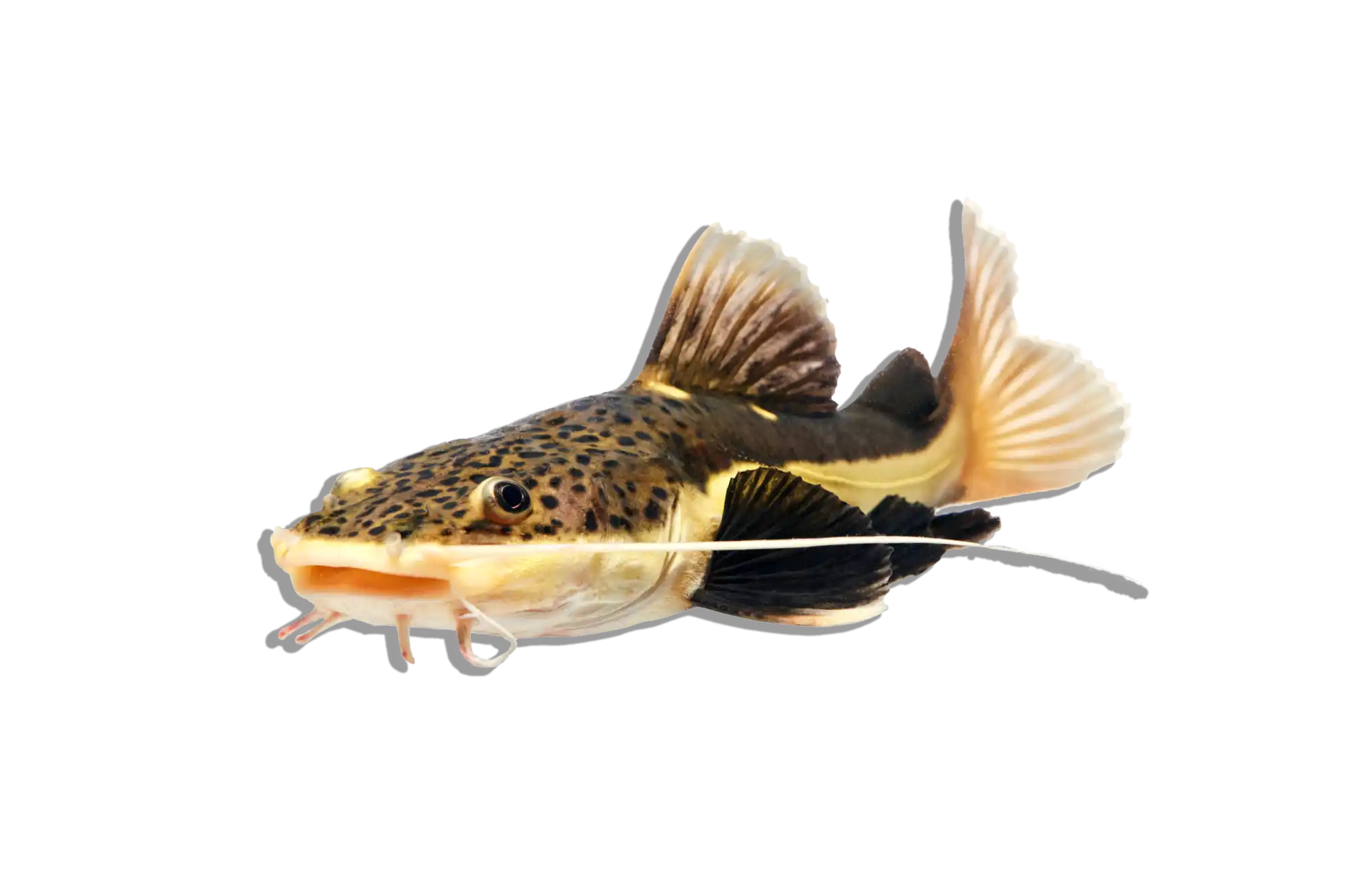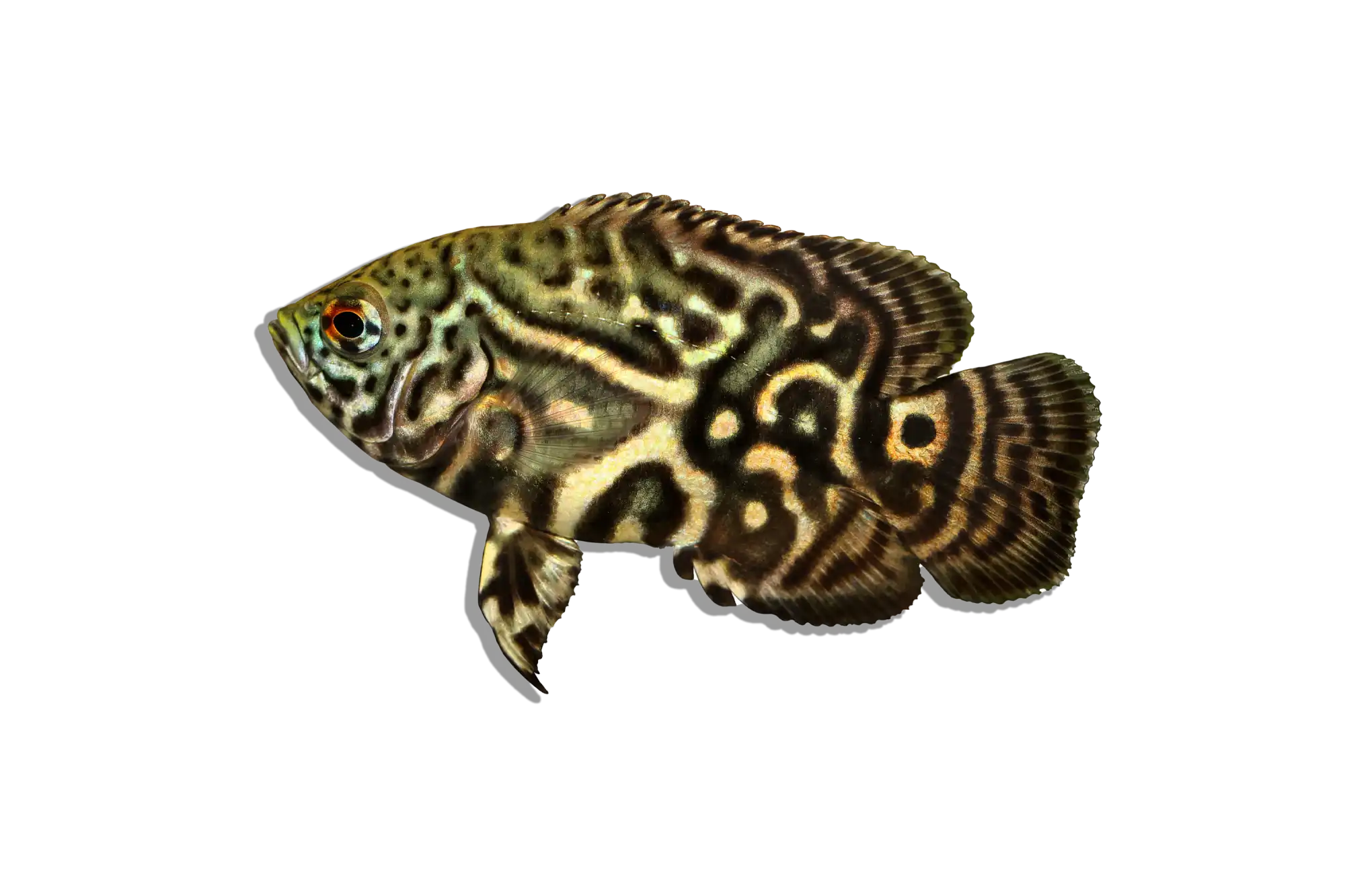Description
Common Name: Elephant Nose Knifefish
Scientific Name: Sternarchorhynchus oxyrhynchus
Other Names: Long-Nosed Elephant Fish, Oxy Knifefish
The Elephant Nose Knifefish is a unique and intriguing freshwater fish known for its elongated snout, resembling an elephant's trunk. This fish is part of the knifefish family and is characterized by its long, slender body and the ability to generate weak electrical fields, which it uses for navigation and communication in its dark, murky habitat.
Habitat and Distribution: The Elephant Nose Knifefish is native to the slow-moving rivers and streams of the Amazon Basin in South America, particularly in countries like Brazil and Peru. These fish inhabit areas with soft, sandy or muddy substrates and dense vegetation, providing ample hiding spots and foraging opportunities. The water in their natural habitat is typically warm, soft to moderately hard, and slightly acidic to neutral.
Size and Lifespan: In both the wild and captivity, Elephant Nose Knifefish can grow up to 10-14 inches (25-35 cm) in length. Their lifespan can range from 10 to 15 years, depending on the care and conditions provided in the aquarium. Ensuring a proper diet, clean water, and adequate space are crucial for their longevity and well-being.
Diet and Behavior: Elephant Nose Knifefish are primarily carnivorous, feeding on small invertebrates, insect larvae, and other small aquatic organisms in the wild. In an aquarium, their diet should consist of live or frozen foods such as bloodworms, brine shrimp, and small crustaceans. They may also accept high-quality carnivorous pellets. These fish are nocturnal and more active during the night, often hiding during the day. They are generally peaceful but can be territorial and aggressive towards conspecifics, so it is best to keep them singly or in large, well-decorated tanks with plenty of hiding spots.
Breeding and Reproduction: Breeding Elephant Nose Knifefish in captivity is rare and challenging due to their specific environmental needs and behaviors. Little is documented about their breeding habits in the wild, and successful reproduction typically involves creating conditions that closely mimic their natural habitat. A separate breeding tank with optimal water conditions, subdued lighting, and plenty of hiding spots is necessary for any breeding attempts.
Aquarium Care and Tank Requirements: To keep Elephant Nose Knifefish, a tank of at least 55 gallons is recommended for a single fish. The tank should include a soft, sandy substrate to allow them to burrow and hide. Providing plenty of hiding spots created with rocks, driftwood, and dense plants will help mimic their natural habitat and reduce stress. Efficient filtration and regular water changes are essential to maintain water quality, as these fish are sensitive to poor conditions. Gentle water flow is suitable to replicate their natural environment.
Ideal Tank Mates: Elephant Nose Knifefish can be kept with other peaceful, similarly sized fish that share similar water parameter requirements. Suitable tank mates include other peaceful community fish like larger tetras, peaceful cichlids, and catfish. Avoid housing them with overly aggressive or significantly smaller fish that may cause stress or be seen as prey. Careful monitoring is necessary to ensure compatibility and minimize aggression.
Difficulty Level: Intermediate to Advanced. While they are hardy and adaptable, their specific dietary needs, nocturnal behavior, and requirement for clean, well-maintained water require experienced care and a well-thought-out aquarium setup.
Water Parameters:
- Temperature: 75-82°F (24-28°C)
- pH: 6.0-7.5
- General Hardness (GH): 4-12 dGH
- Carbonate Hardness (KH): 2-6 dKH
- Ammonia: 0 ppm (ideal), up to 0.25 ppm (max)
- Nitrite: 0 ppm (ideal), up to 0.25 ppm (max)
- Nitrate: <20 ppm (ideal), up to 40 ppm (max)
Additional Information:
- The Elephant Nose Knifefish’s unique appearance and ability to generate weak electrical fields make it a fascinating addition to a specialized aquarium, providing both visual interest and a touch of the exotic.
- These fish have specialized sensory organs that allow them to detect electrical signals, aiding in navigation and hunting in low-visibility environments.
- In their natural habitats, Elephant Nose Knifefish play a role in controlling populations of small invertebrates, contributing to the overall health of the aquatic ecosystem.
- Fun fact: The elongated "trunk" of the Elephant Nose Knifefish is actually an extended mouthpart that helps it forage for food in the substrate, adding to its unique and captivating appearance.



















